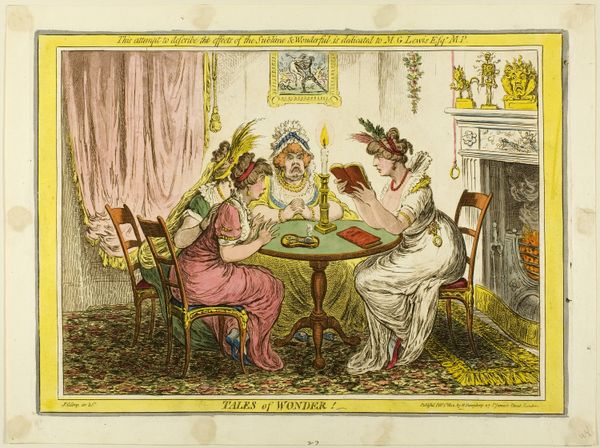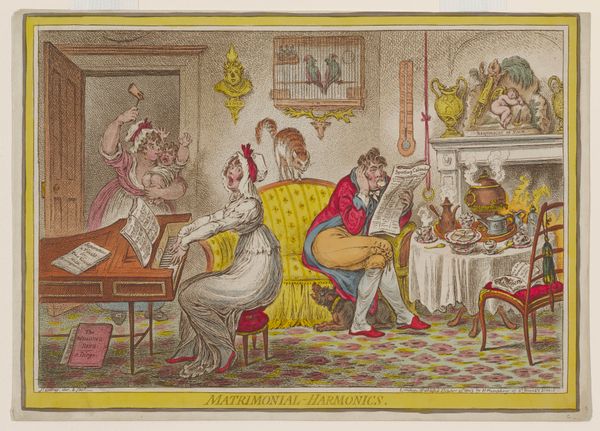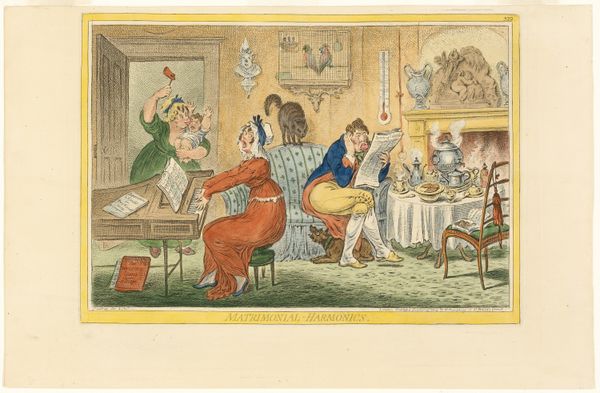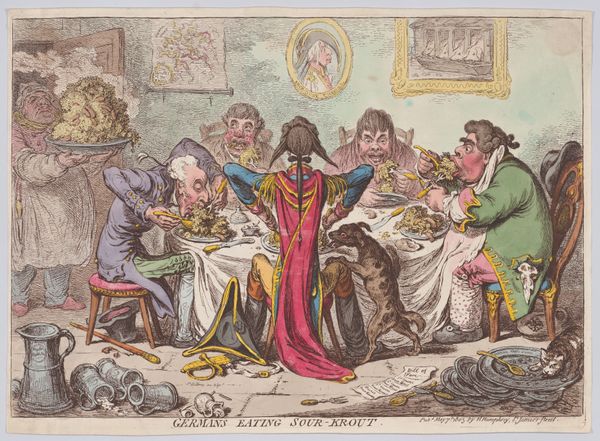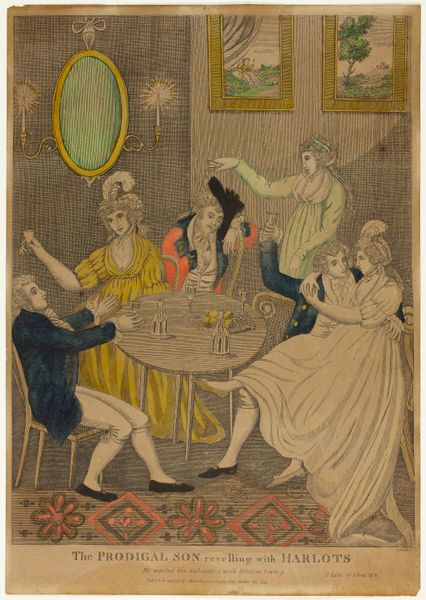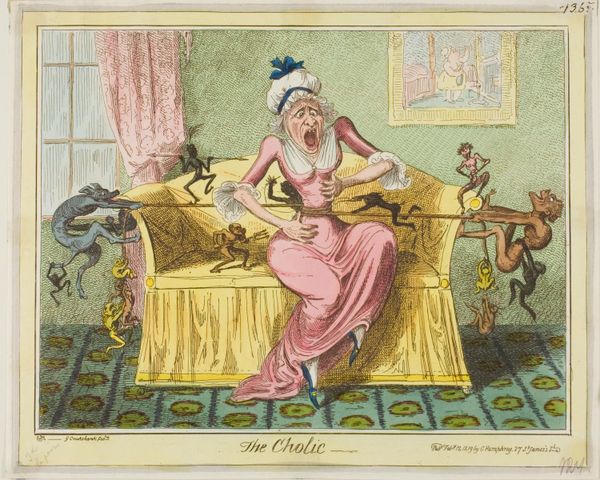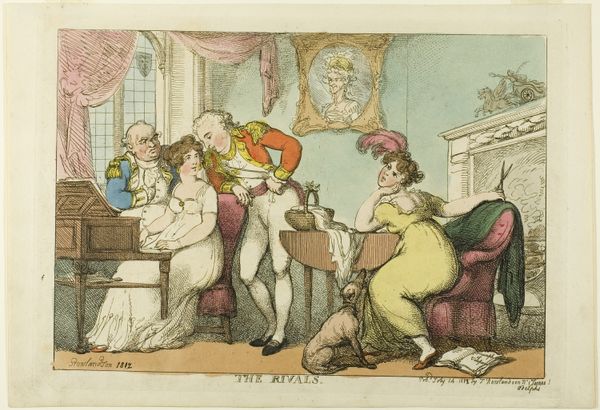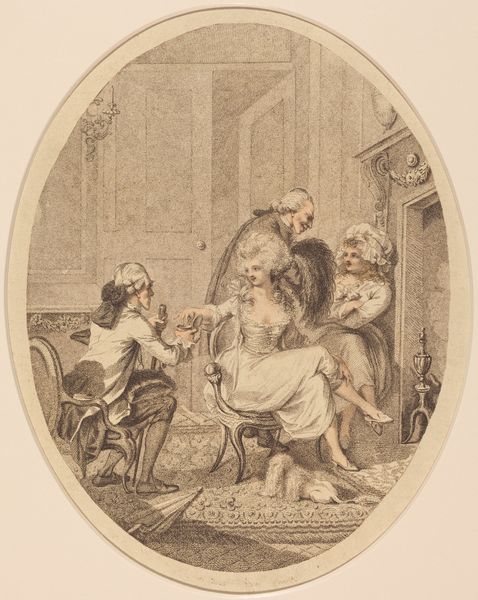
Dimensions: 10 x 13 3/4 in. (25.4 x 34.93 cm) (plate)
Copyright: Public Domain
Curator: Here we have "Tales of Wonder!" an etching with engraving and watercolor by James Gillray, created around 1802. The piece currently resides here at the Minneapolis Institute of Art. Editor: What immediately strikes me is the almost absurd composition; the elongated figures clustered around that small table, illuminated by a single candle. It feels theatrical, deliberately so. Curator: Gillray's work is known for its caricature, often biting social and political commentary. Observe how the lines emphasize the grotesqueness in the older woman's expression, a study in contrast to the presumed innocence of the younger ladies. Consider also how the candlelight creates dramatic chiaroscuro, highlighting and exaggerating the forms. Editor: It’s as if he's illuminating the power of storytelling. Look at the woman reading—she's poised, almost a performer. The others, captivated by her voice, showcase the emotional influence of narrative, almost bordering on the gothic in its heightened portrayal of suspense. I can't help but think the candle symbolizes not just illumination, but a shared imaginative experience. The decorations atop the mantel in the background amplify the dramatic staging, don't you think? Curator: Yes, the objects behind the fireplace reinforce the themes of luxury, wealth, and perhaps even excess—visual cues that would not be lost on Gillray's contemporary audience. Even the positioning of objects within the tight composition contributes to the image’s overall tension. Notice, for example, the precise mirroring of each face reacting to the drama that's being read aloud? The symmetry feels deliberate, constructing balance even amid caricature. Editor: So much to unpack visually, socially, historically. One feels drawn into their little theatrical circle! The print holds many historical interpretations that one could unpack forever. Curator: Absolutely. Gillray leaves us much to analyze here, a snapshot of societal mores viewed through his satirical lens. Editor: Indeed, it seems he asks the viewer to consider the nature of entertainment, perception, and perhaps, even truth itself.
Comments
minneapolisinstituteofart almost 2 years ago
⋮
This image mocks the Romantic era's fixation with horror, melodrama, and the sublime. The print was dedicated to Matthew Gregory Lewis, author of the popular novel The Monk, published in 1796. A group of women are shown listening in terror as their companion reads aloud this gothic tale about the downfall of a pious monk who raped and murdered women and ultimately sold his soul to the devil. The room is decorated with its own frightful embellishments; a dragon, Gorgon's head and small skeleton intertwined in a snake adorn the chimneypiece, and a violent painting resembling The Rape of the Sabines hangs on the wall.
Join the conversation
Join millions of artists and users on Artera today and experience the ultimate creative platform.
